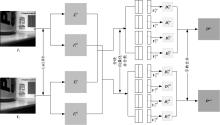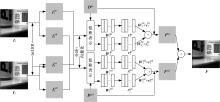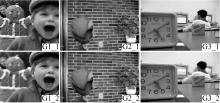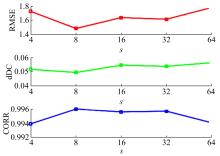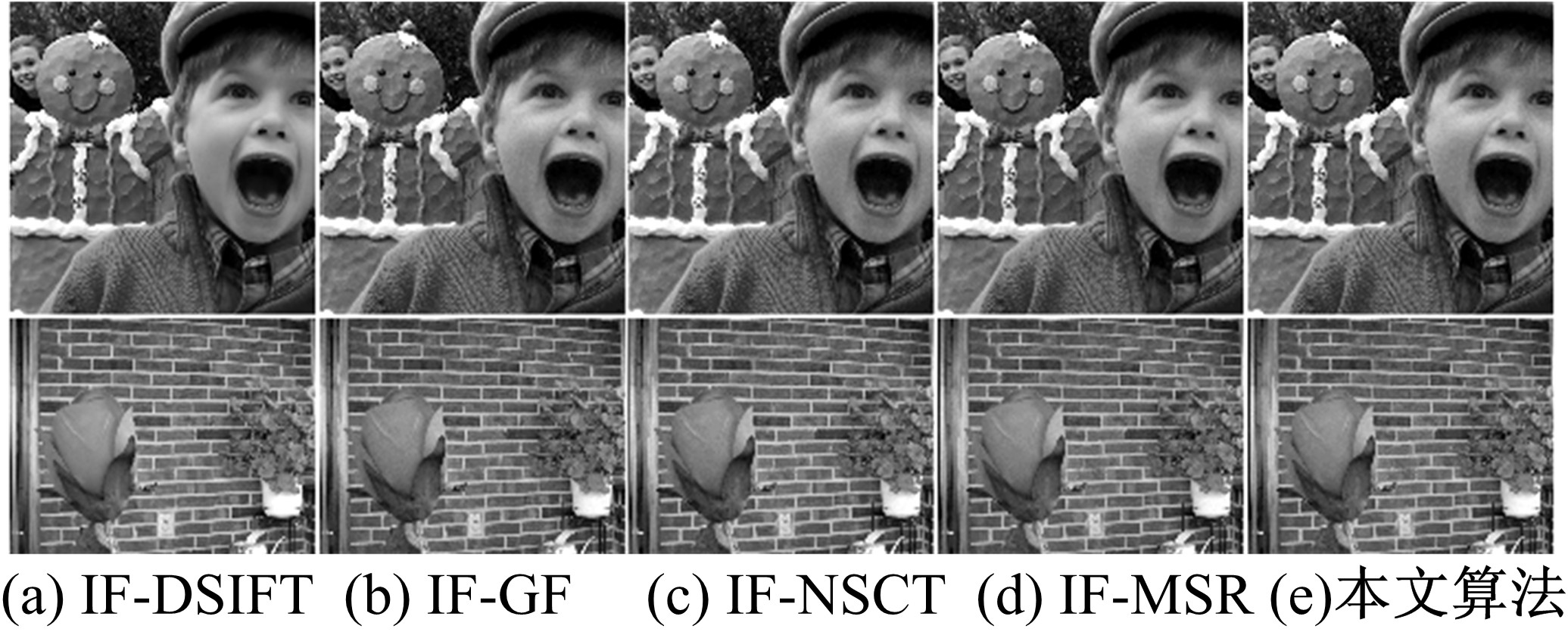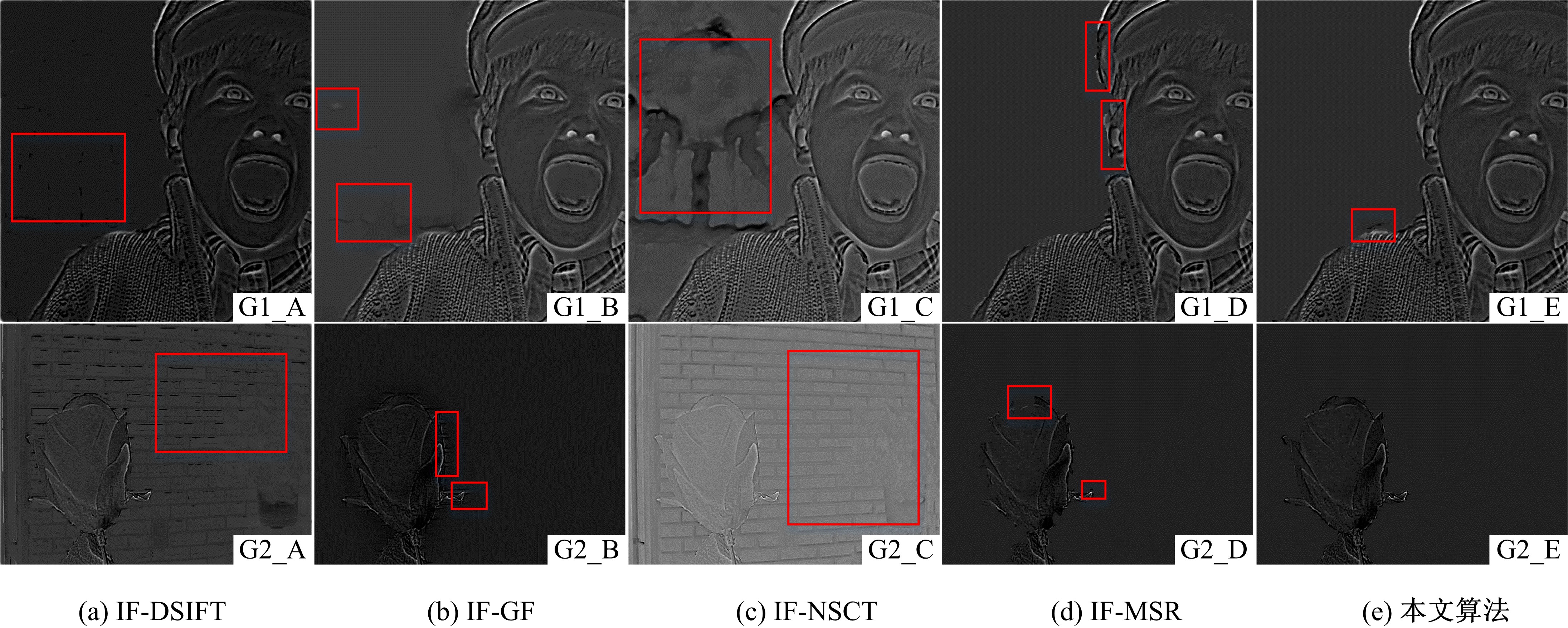Journal of Jilin University(Engineering and Technology Edition) ›› 2020, Vol. 50 ›› Issue (1): 297-305.doi: 10.13229/j.cnki.jdxbgxb20180805
Multi-focus image fusion based on latent low⁃rank representation combining low⁃rank representation
Man CHEN1,2( ),Yong ZHONG1,2,Zhen-dong LI1,2(
),Yong ZHONG1,2,Zhen-dong LI1,2( )
)
- 1. Chengdu Institute of Computer Applications, Chinese Academy of Sciences, Chengdu 610041, China
2. University of Chinese Academy of Sciences, Beijing 100049, China
CLC Number:
- TP399
| 1 | James A P, Dasarathy B V. Medical image fusion: a survey of the state of the art[J]. Information Fusion, 2014, 19(1): 4-19. |
| 2 | Liu Y, Chen X, Wang X S, et al. Deep learning for pixel-level image fusion: recent advances and future prospects[J]. Information Fusion, 2018, 42(3): 158-173. |
| 3 | Jin X, Jiang Q, Yao S W, et al. A survey of infrared and visual image fusion methods[J]. Infrared Physics and Technology, 2017, 85: 478-501. |
| 4 | Ghassemian H. A review of remote sensing image fusion methods[J]. Information Fusion, 2016, 32: 75-89. |
| 5 | Wang W C, Chang F L. A multi-focus image fusion method based on Laplacian pyramid[J]. Journal of Computers, 2011, 6(12): 2559-2566. |
| 6 | Yang Y. A novel DWT based multi-focus image fusion method[J]. Procedia Engineering, 2011, 24(1): 177-181. |
| 7 | Zhang Q, Guo B L. Multifocus image fusion using the nonsubsampled contourlet transform[J]. Signal Processing, 2009, 89(7):1334-1346. |
| 8 | Yang Wei, Chai Qi, Wang Li-ming. Multi-focus image fusion method based on dual-tree complex wavelet transform[J]. Computer Engineering and Applications, 2007, 43(28): 12-14. |
| 9 | 杨扬, 戴明, 周箩鱼, 等. 基于非下采样Bandelet变换的多聚焦图像融合[J]. 吉林大学学报: 工学版, 2014, 44(2): 525-530. |
| Yang Yang, Dai Ming, Zhou Luo-yu, et al. Multifocus image fusion based on nonsubsampled Bandelet transform[J]. Journal of Jilin University (Engineering and Technology Edition), 2014, 44(2): 525-530. | |
| 10 | Li S T, Kang X D, Hu J W, et al. Image matting for fusion of multi-focus images in dynamic scenes[J]. Information Fusion, 2013, 14(2): 147-162. |
| 11 | Wang Z B, Ma Y D, Gu J. Multi-focus image fusion using PCNN[J]. Pattern Recognition, 2010, 43(6): 2003-2016. |
| 12 | Li S T, Kang X D, Hu J W. Image fusion with guided filtering[J]. IEEE Transactions on Image Processing, 2013, 22(7): 2864-2875. |
| 13 | Liu S P, Liu Y, Wang Z F. Multi-focus image fusion with dense SIFT[J]. Information Fusion, 2015, 23: 139-155. |
| 14 | Chen L, Li J B, Philip C C L. Regional multifocus image fusion using sparse representation[J]. Optics Express, 2013, 21(4): 5182-5197. |
| 15 | 尹明, 战荫伟, 裴海龙. 基于稀疏补算子学习的图像融合方法[J]. 吉林大学学报: 工学版, 2016, 46(6): 2052-2058. |
| Yin Ming, Zhan Yin-wei, Pei Hai-long, Co-sparse analysis operator learning for image fusion[J]. Journal of Jilin University (Engineering and Technology Edition), 2016, 46(6): 2052-2058. | |
| 16 | Liu Y, Chen X, Ward R K, et al. Image fusion with convolutional sparse representation[J]. IEEE Signal Processing Letters, 2016, 23(12): 1882-1886. |
| 17 | 首照宇, 胡蓉, 欧阳宁, 等. 基于多尺度稀疏表示的图像融合方法[J]. 计算机工程与设计, 2015, 36(1): 232-235. |
| Shou Zhao-yu, Hu Rong, Ouyang Ning, et al. Image fusion based on multi-scale sparse representation[J]. Computer Engineering and Design, 2015, 36(1): 232-235. | |
| 18 | Li H, Wu X J. Multi-focus image fusion using dictionary learning and low-rank representation[J]. LNCS, 2017:675- 686. |
| 19 | Zhong J Y, Yang B, Li Y H, et al. Image fusion and super-resolution with convolutional neural network[C]∥ Chinese Conference on Pattern Recognition. Singapore: Springer, 2016, 663:78-88. |
| 20 | Liu Y, Chen X, Peng H, et al. Multi-focus image fusion with a deep convolutional neural network[J]. Information Fusion, 2017, 36: 191-207. |
| 21 | Du C B, Gao S S. Image segmentation-based multi-focus image fusion through multi-scale convolutional neural network[J]. IEEE Access, 2017, 5(99):15750-15761. |
| 22 | Liu G, Yan S. Latent low-rank representation for subspace segmentation and feature extraction[C]∥International Conference on Computer Vision. Barcelona, Spain, 2011: 1615-1622. |
| 23 | Lin Z, Chen M, Ma Y. The augmented lagrange multiplier method for exact recovery of corrupted low-rank matrices[DB/OL]. [2010.9-29]. http:∥export.arxiv.org/abs/1009.5055. |
| 24 | Liu G C, Lin Z C, Yan S C, et al. Robust recovery of subspace structures by low-rank representation[J]. IEEE Transactions on Pattern Analysis and Machine Intelligence, 2013, 35(1): 171-184. |
| 25 | He K M, Sun J, Tang X O. Guided image filtering[J]. IEEE Transactions on Pattern Analysis and Machine Intelligence, 2013, 35(6): 1397-1409. |
| 26 | Aharon M, Elad M, Bruckstein A. K-SVD: an algorithm for designing overcomplete dictionaries for sparse representation[J]. IEEE Transactions on Signal Processing, 2006, 54(11): 4311-4322. |
| 27 | Liu Z, Blasch E, Xue Z, et al. Objective assessment of multiresolution image fusion algorithms for context enhancement in night vision: a comparative study[J]. IEEE Transactions on Pattern Analysis and Machine Intelligence, 2011, 34(1): 94-109. |
| [1] | Xiao-dong ZHANG,Xiao-jun XIA,Hai-feng LYU,Xu-chao GONG,Meng-jia LIAN. Dynamic load balancing of physiological data flow in big data network parallel computing environment [J]. Journal of Jilin University(Engineering and Technology Edition), 2020, 50(1): 247-254. |
| [2] | Xiao-hui WANG,Lu-shen WU,Hua-wei CHEN. Denoising of scattered point cloud data based on normal vector distance classification [J]. Journal of Jilin University(Engineering and Technology Edition), 2020, 50(1): 278-288. |
| [3] | Jun-yi DENG,Yan-heng LIU,Shi FENG,Rong-cun ZHAO,Jian WANG. GSPN⁃based model to evaluate the performance and securi tytradeoff in Ad-hoc network [J]. Journal of Jilin University(Engineering and Technology Edition), 2020, 50(1): 255-261. |
| [4] | Tie-jun WANG,Wei-lan WANG. Thangka image annotation based on ontology [J]. Journal of Jilin University(Engineering and Technology Edition), 2020, 50(1): 289-296. |
| [5] | Xiong-fei LI,Jing WANG,Xiao-li ZHANG,Tie-hu FAN. Multi-focus image fusion based on support vector machines and window gradient [J]. Journal of Jilin University(Engineering and Technology Edition), 2020, 50(1): 227-236. |
| [6] | Hong-yan WANG,He-lei QIU,Jia ZHENG,Bing-nan PEI. Visual tracking method based on low⁃rank sparse representation under illumination change [J]. Journal of Jilin University(Engineering and Technology Edition), 2020, 50(1): 268-277. |
| [7] | Xiang-jiu CHE,Hua-luo LIU,Qing-bin SHAO. Fabric defect recognition algorithm based onimproved Fast RCNN [J]. Journal of Jilin University(Engineering and Technology Edition), 2019, 49(6): 2038-2044. |
| [8] | Bing-hai ZHOU,Qiong WU. Balancing and optimization of robotic assemble lines withtool and space constraint [J]. Journal of Jilin University(Engineering and Technology Edition), 2019, 49(6): 2069-2075. |
| [9] | Hong-wei ZHAO,Peng WANG,Li-li FAN,Huang-shui HU,Ping-ping LIU. Similarity retention instance retrieval method [J]. Journal of Jilin University(Engineering and Technology Edition), 2019, 49(6): 2045-2050. |
| [10] | Jun SHEN,Xiao ZHOU,Zu-qin JI. Implementation of service dynamic extended network and its node system model [J]. Journal of Jilin University(Engineering and Technology Edition), 2019, 49(6): 2058-2068. |
| [11] | You ZHOU,Sen YANG,Da-lin LI,Chun-guo WU,Yan WANG,Kang-ping WANG. Acceleration platform for face detection and recognition based on field⁃programmable gate array [J]. Journal of Jilin University(Engineering and Technology Edition), 2019, 49(6): 2051-2057. |
| [12] | Bin LI,Xu ZHOU,Fang MEI,Shuai-ning PAN. Location recommendation algorithm based on K-means and matrix factorization [J]. Journal of Jilin University(Engineering and Technology Edition), 2019, 49(5): 1653-1660. |
| [13] | Xiong-fei LI,Lu SONG,Xiao-li ZHANG. Remote sensing image fusion based on cooperative empirical wavelet transform [J]. Journal of Jilin University(Engineering and Technology Edition), 2019, 49(4): 1307-1319. |
| [14] | Yuan-ning LIU,Shuai LIU,Xiao-dong ZHU,Guang HUO,Tong DING,Kuo ZHANG,Xue JIANG,Shu-jun GUO,Qi-xian ZHANG. Iris secondary recognition based on decision particle swarm optimization and stable texture [J]. Journal of Jilin University(Engineering and Technology Edition), 2019, 49(4): 1329-1338. |
| [15] | Bin LI,Guo⁃jun SHEN,Geng SUN,Ting⁃ting ZHENG. Improved chicken swarm optimization algorithm [J]. Journal of Jilin University(Engineering and Technology Edition), 2019, 49(4): 1339-1344. |
|
||




